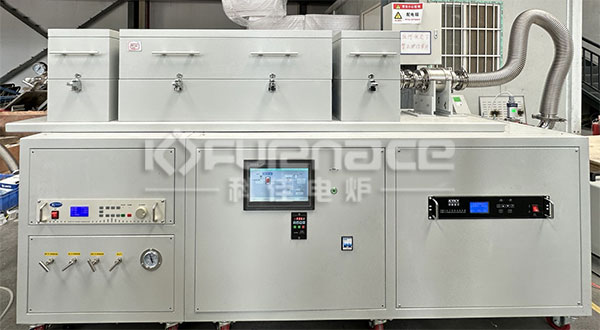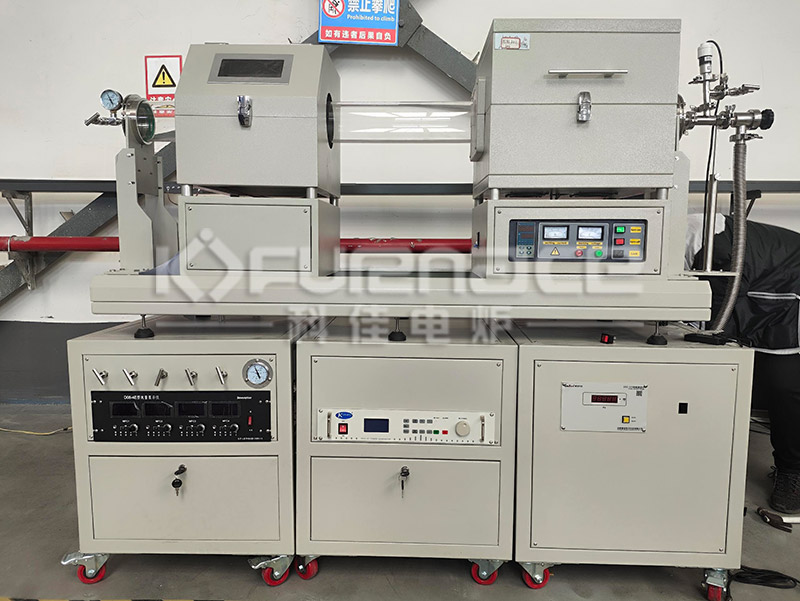When choosing a multi gas path PECVD (plasma enhanced chemical vapor deposition) electric furnace, multiple key factors need to be considered to ensure that the equipment can meet specific research needs and have good performance. Let’s take a look at what to pay attention to when choosing multi gas path PECVD!

Rotating and tilting PECVD electric furnace (click on the image to view product details)
1. Sedimentary performance
Deposition rate: Choose PECVD equipment with efficient deposition rate to improve experimental efficiency and material utilization. The sedimentation rate directly affects the progress and cost of the experiment.
Film uniformity: The equipment should be able to form a film with a highly consistent thickness and composition on the substrate, which is important for the reproducibility of experimental results and equipment performance.
2. Temperature control
Working temperature range: PECVD equipment should be able to operate at lower temperatures, especially when dealing with temperature sensitive substrates. At the same time, the equipment should have good temperature control accuracy to adjust the growth conditions and performance of the film.
Heating rate and temperature control accuracy: Rapid heating rate and precise temperature control help achieve a more stable deposition process.
3. Gas flow and pressure control
Multi gas control: The equipment should have multiple independent gas control systems to simultaneously control the flow and pressure of multiple gases and meet different experimental requirements.
Automatic pressure balancing: Real time monitoring of pressure inside the pipeline and automatic balancing function help maintain a stable sedimentary environment.
4. Operation and Control
Centralized control system: Heating control, plasma RF control, gas flow control, vacuum system control, etc. should be centralized on a touch screen for unified adjustment and control to improve experimental efficiency and accuracy.
Intelligent functions, such as intelligent gas circuit switching, RF power and switch timing control, can further simplify experimental operations and improve work efficiency.
5. Compatibility and flexibility
Material compatibility: PECVD equipment should be able to deposit a variety of materials, including insulators, conductors, and semiconductors, to meet the needs of different research fields.
Process compatibility: The equipment should be able to be combined with other deposition techniques (such as PVD, ALD, etc.) to form complex multilayer structures or achieve specific functions.
Precursor compatibility: The equipment should be able to use solid, liquid, or gaseous precursors for flexible selection of deposition materials and optimization of process conditions.
6. Safety and Environmental Protection
Safety protection function: The equipment should have safety protection functions such as over temperature protection and leakage protection to ensure the safety of experimental personnel.
Environmental performance: The equipment should have good environmental performance to reduce pollution to the environment.
7. After sales service and maintenance
After sales service quality: Consider the after-sales service quality and response speed of equipment suppliers, so that timely and effective solutions can be obtained when equipment malfunctions.
Maintenance cost: Choosing equipment with lower operating and maintenance costs can help reduce experimental costs and improve research efficiency.
8. Equipment size and layout
Equipment size: Select the appropriate PECVD equipment size based on the laboratory’s spatial layout and actual needs.
Layout design: The equipment layout should be reasonable, convenient for experimental operation and maintenance.

Commonly used PECVD electric furnaces (click on the image to view product details)
In general, when choosing a multi gas path PECVD electric furnace, it is necessary to comprehensively consider deposition performance, temperature control, gas flow and pressure control, operation and control, compatibility and flexibility, safety and environmental protection, after-sales service and maintenance, as well as equipment size and layout. By comprehensively evaluating these factors, one can choose PECVD equipment that is more suitable for their research needs.Click to learn more PECVD devices! Or click on online customer service to learn more about product information!